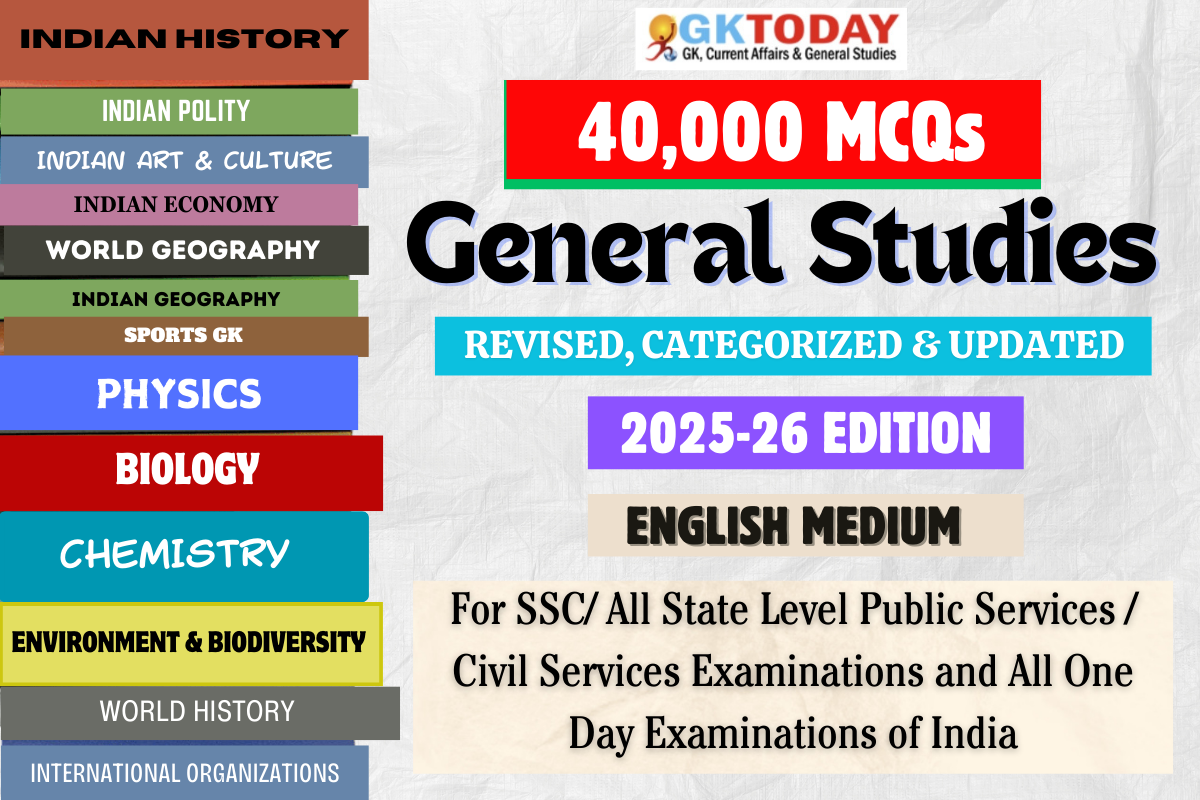1. Who among the following is the author of the “Divine Comedy”?
[A] Goethe
[B] Milton
[C] Dante
[D] Shakespeare
Show Answer
Correct Answer: C [ Dante ]
Notes:
The Divine Comedy is an epic poem written by Dante Alighieri between c. 1308 and his death in 1321. It is widely considered the preeminent work of Italian literature, and is seen as one of the greatest works of world literature. The poem’s imaginative and allegorical vision of the afterlife is a culmination of the medieval world-view as it had developed in the Western Church. It helped establish the Tuscan dialect, in which it is written, as the standardized Italian language.
2. Where are the headquarters of International Organization for Standardization (ISO)?
[A] Paris
[B] Geneva
[C] London
[D] Frankfurt
Show Answer
Correct Answer: B [Geneva]
Notes:
The International Organization for Standardization is an international standard-setting body. It comprises of representatives from various national standards organizations. Its headquarters is located in Geneva.
3. On 15 June 2007 the United Nations General Assembly voted to establish which date as the International Day of Non-Violence?
[A] October, 2nd
[B] October, 5th
[C] July 2nd
[D] February 6th
Show Answer
Correct Answer: A [October, 2nd]
Notes:
The United Nations General Assembly established October 2nd as the International Day of Non-Violence in 2007 to honor Mahatma Gandhi’s birthday. Gandhi is renowned for his philosophy of non-violent resistance, which influenced civil rights movements worldwide. The day promotes the principles of non-violence through education and public awareness.
4. Asian Productivity Organization (APO) is based in:
[A] Singapore
[B] Manila
[C] Beijing
[D] Tokyo
Show Answer
Correct Answer: D [Tokyo]
Notes:
The Asian Productivity Organization (APO) is based in Tokyo, Japan. Established in 1961, it aims to promote productivity in the Asia-Pacific region through various programs and initiatives. Tokyo was chosen as the headquarters due to Japan’s post-war economic success, which served as a model for productivity improvement in the region.
5. ECB is the central bank of Eurozone which was established by the Treaty of Amsterdam in 1998.
Headquarters of ECB is located at?
[A] London
[B] Rome
[C] Paris
[D] Frankfurt
Show Answer
Correct Answer: D [Frankfurt]
Notes:
ECB is the central bank of Eurozone which was established by the Treaty of Amsterdam in 1998. Its headquarters is in Frankfurt. Frankfurt is a city n Germany.
6. Indian Navy and which among the following Navies have regularly conducted joint exercises named ‘INDRA‘ since 2003?
[A] Russia
[B] USA
[C] UK
[D] Australia
Show Answer
Correct Answer: A [Russia]
Notes:
Indra Exercise is a joint military exercise that takes place between India and Russia. It is a bilateral exercise that involves the armed forces of both countries, including the Indian Army, Indian Air Force, and Indian Navy, as well as the Russian Armed Forces. The exercise typically focuses on a variety of military drills and training activities, including air defense, maritime security, and counter-terrorism operations. The first Indra Exercise was held in 2003, and it has been conducted annually ever since. The exercise is part of the growing military cooperation between India and Russia, and it is aimed at enhancing the interoperability and coordination of their armed forces.
7. which among the following missiles, India claims that it is first anti-tank missile which has a complete fiberglass structure?
[A] Shaurya
[B] Sagarika
[C] Nag
[D] Trishul
Show Answer
Correct Answer: C [Nag]
Notes:
The correct answer is Nag. The Nag missile, developed by India’s Defence Research and Development Organisation (DRDO), is indeed claimed to be the first anti-tank missile with a complete fiberglass structure. This design choice enhances its lightweight and durability, making it effective in various combat scenarios. The Nag missile is part of India’s Integrated Guided Missile Development Program and is designed to engage and destroy armored vehicles.
8. Who among the following authors wrote “Adipurana”?
[A] Mahaviracharya
[B] Srinatha
[C] Krishna Misra
[D] Jinasena
Show Answer
Correct Answer: D [Jinasena]
Notes:
In the 9th century, a Digambara Jain monk, Jinasena composed a Sanskrit poem “Adipurana” that deals with the story of the first Jain Tirthankar Rishabha Deva and his sons Bharata and Bahubali. It consists of 12 thousand shlokas and divided into 12 parvas.
9. Who is the author of the book “Taj-ul-masir”?
[A] Hasan Nizami
[B] Amir Khusrau
[C] Barni
[D] Sarhindi
Show Answer
Correct Answer: A [Hasan Nizami]
Notes:
The book “Taj-ul-masir” was penned by Sadruddin Mohammad Hassan Nizami, popularly known as Hasan Nizami. The book, written in the Turki language, notably deals with political events in North India from approximately 1192 AD to 1228 AD. It offers a thorough examination of the reign of Sultan Qutub-ud-din Aibak, the founder of the Slave dynasty, and the early rule of Iltumish, Sultan Qutub-ud-din Aibak’s son-in-law.
10. Who among the following was the author of Akbarnama?
[A] Akbar
[B] Birbal
[C] Fakir Aziao Din
[D] Abul Fazal
Show Answer
Correct Answer: D [Abul Fazal]
Notes:
Abul Fazl was the author of Akbarnama, the official history of Akbar’s reign in 3 volumes. This book gives the history of Akbar’s forefathers from Timur to Humayun and Akbar’s reign till 1602 AD. Abul Fazl was one of the nine jewels in the royal court of Akbar.

